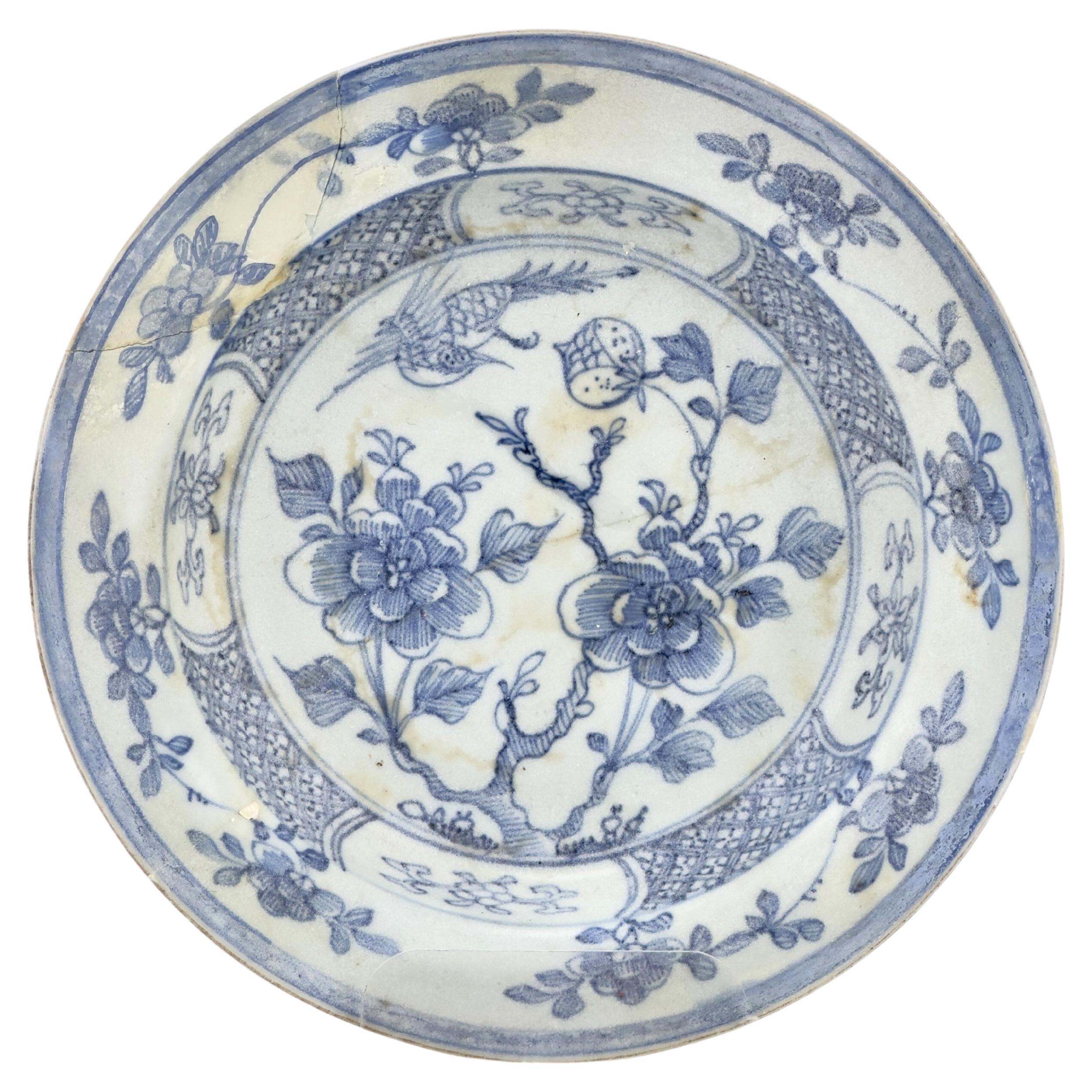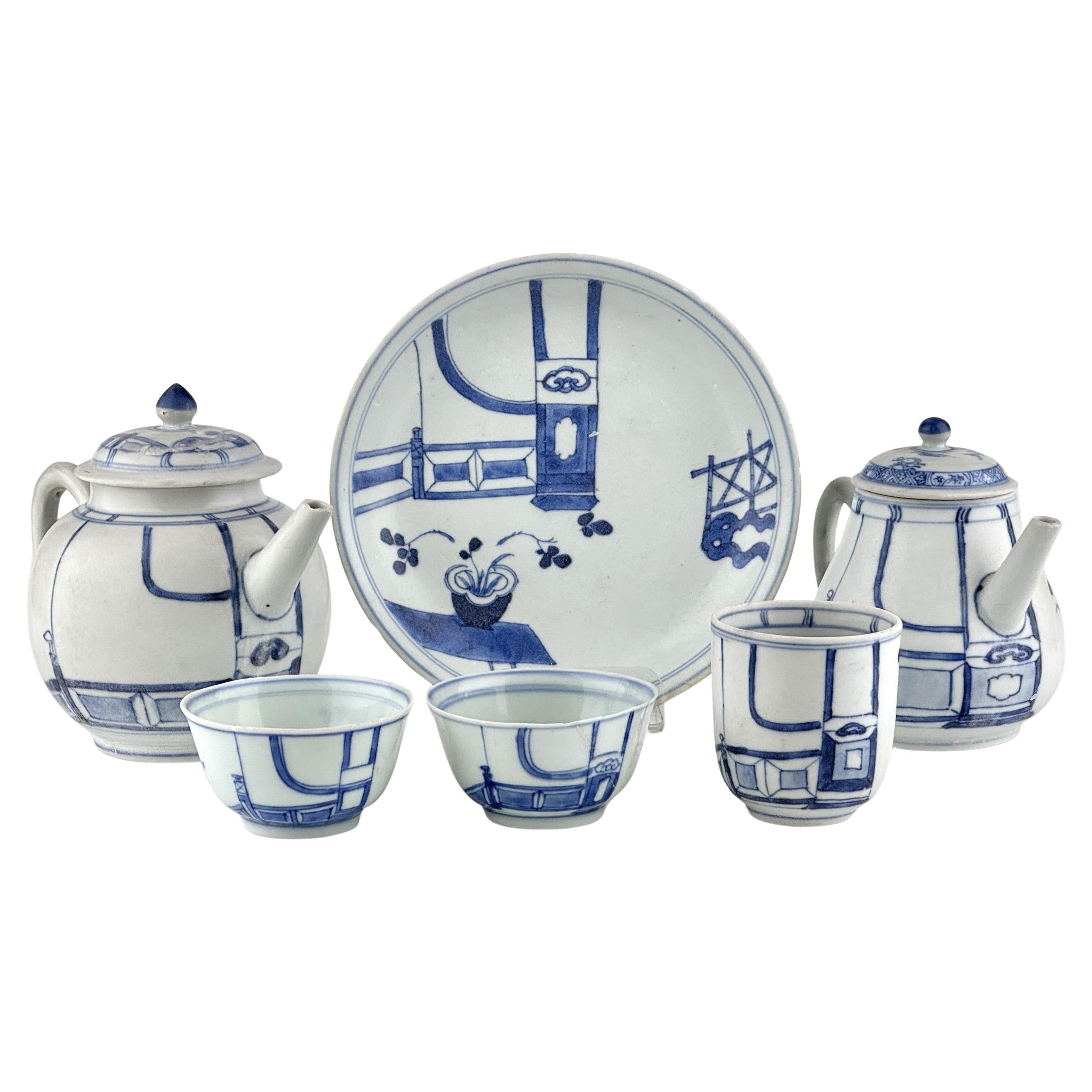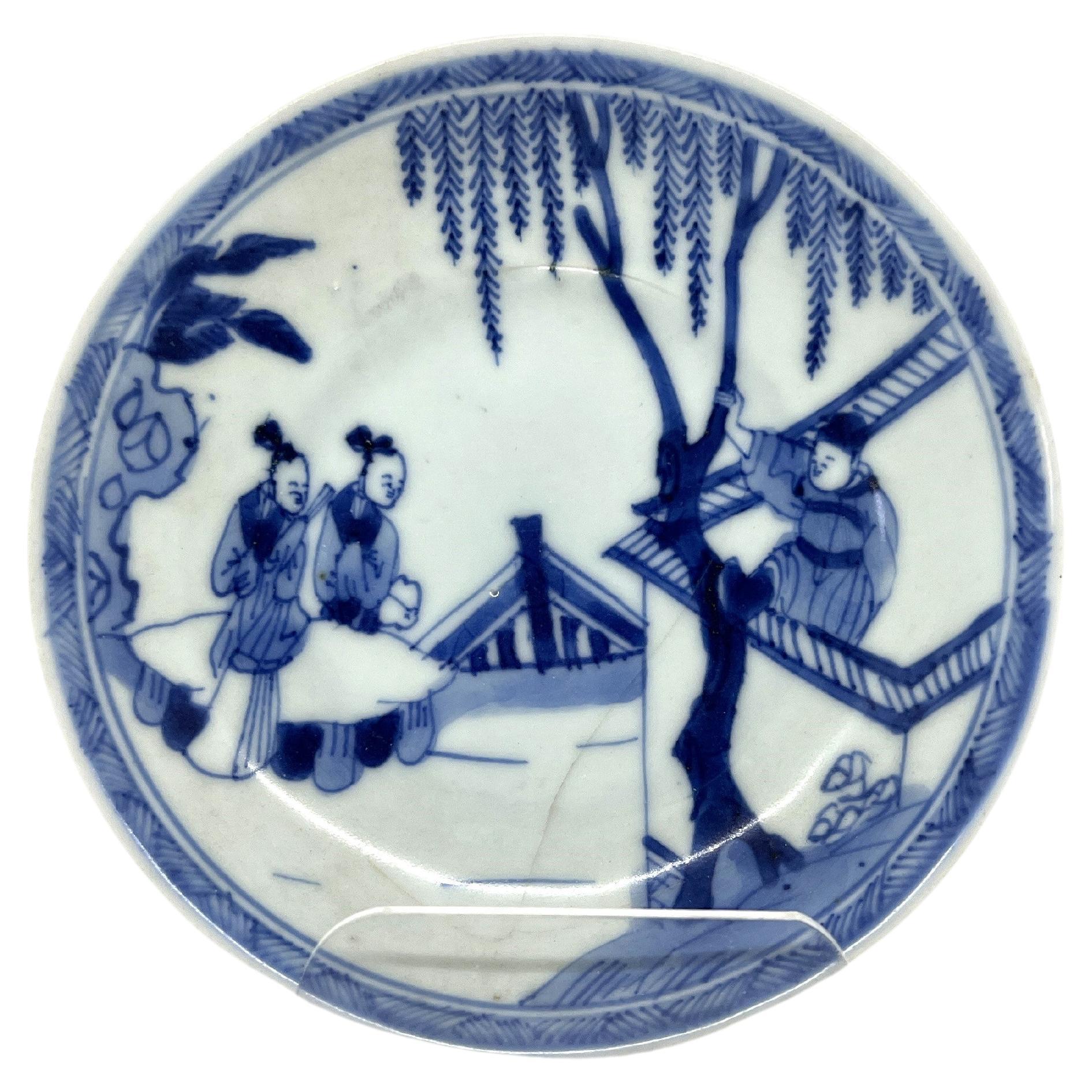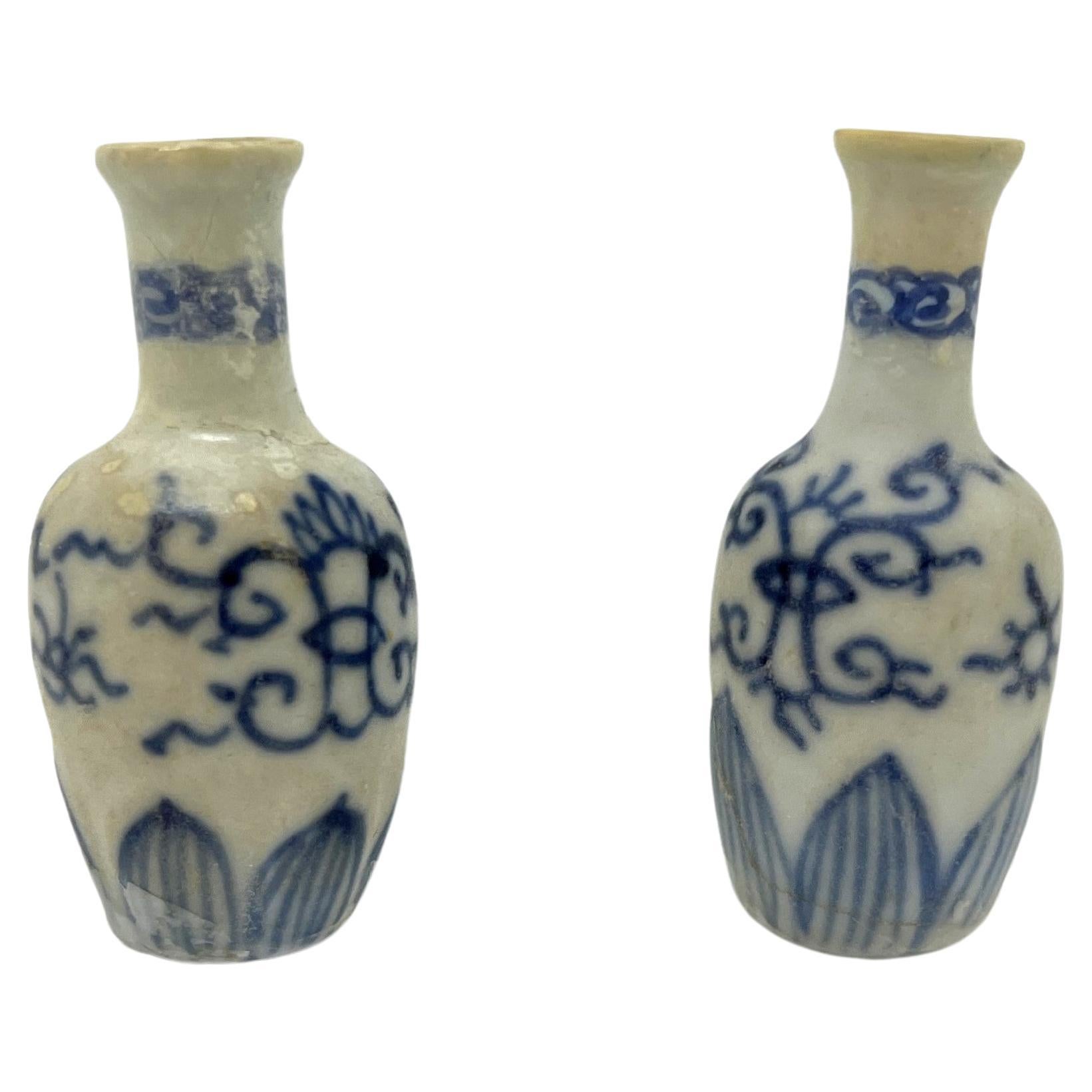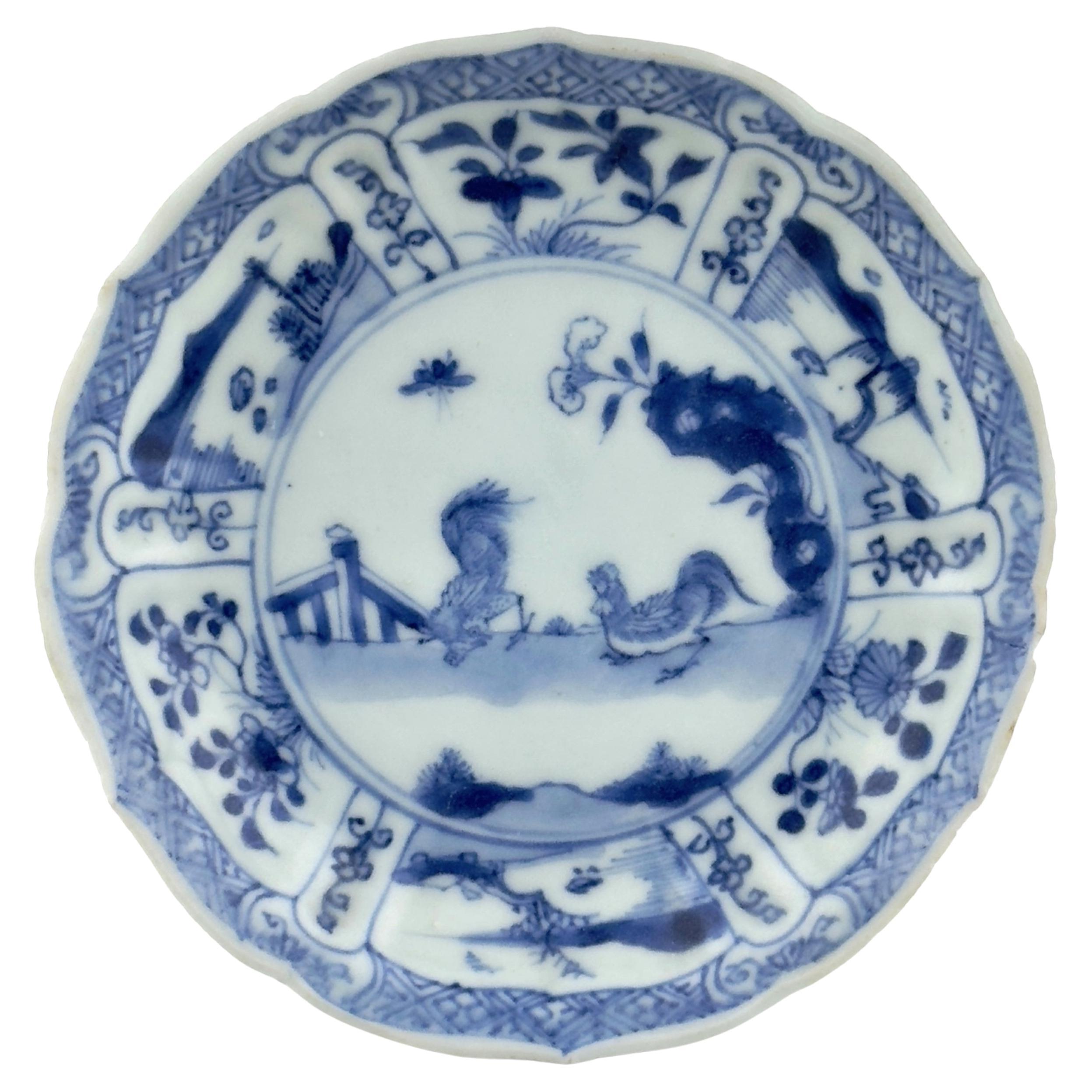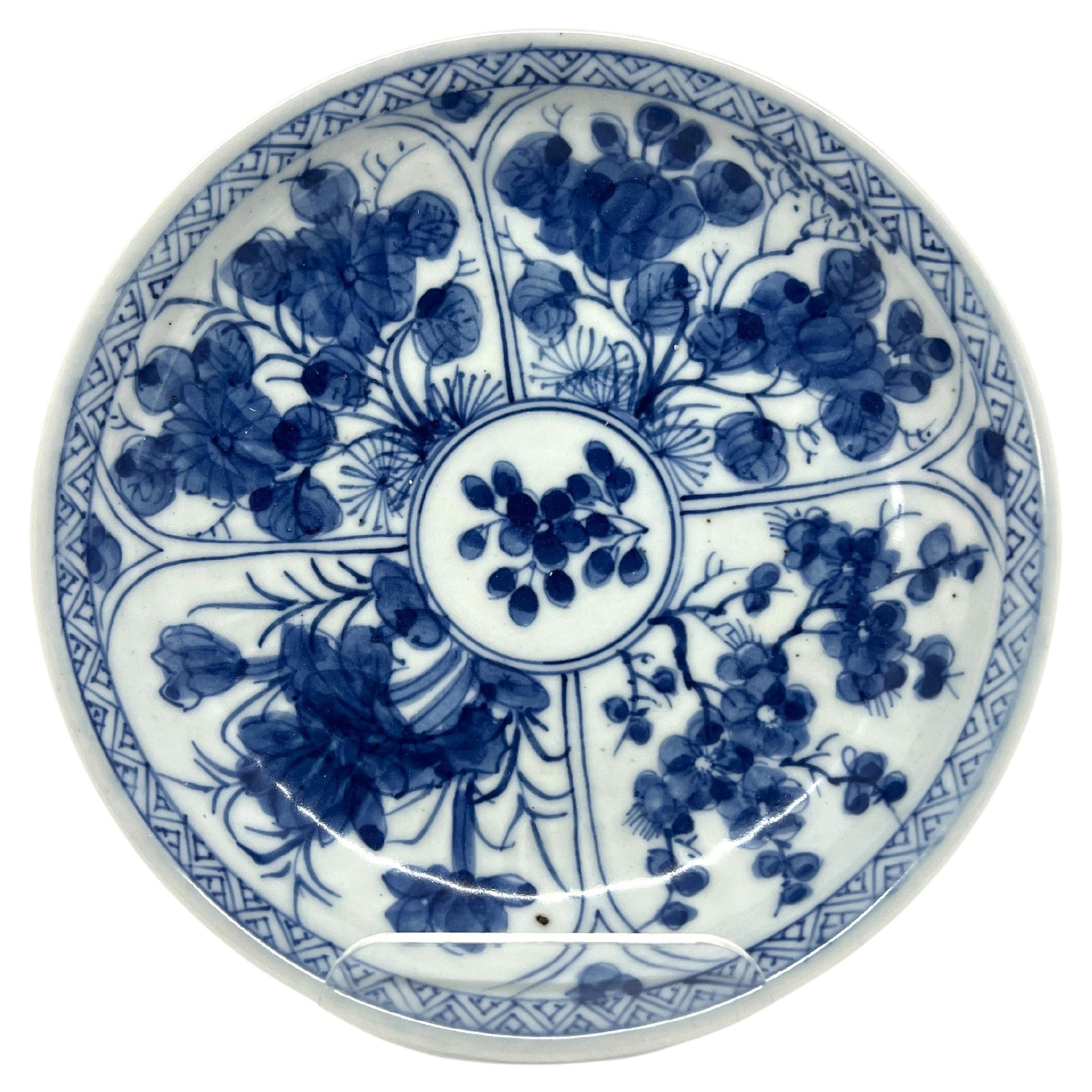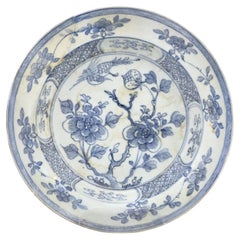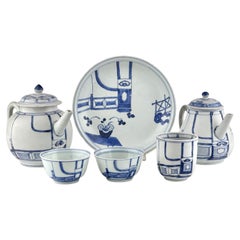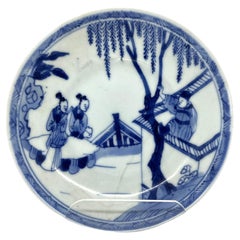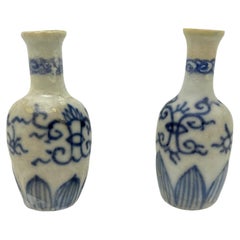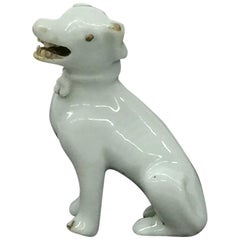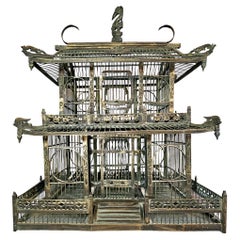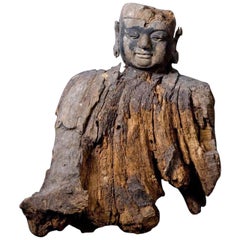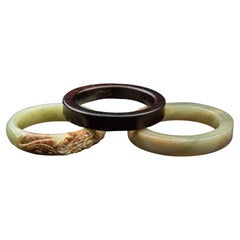Items Similar to Very Rare Ewer of a Seated Monkey, C 1725, Qing Dynasty, Yongzheng Era
Want more images or videos?
Request additional images or videos from the seller
1 of 11
Very Rare Ewer of a Seated Monkey, C 1725, Qing Dynasty, Yongzheng Era
About the Item
This statue is a representative piece excavated from the Ca Mau shipwreck. It is featured on the cover of the collection book by Dr. Zelnik. Ewer and cover in the form of a seated monkey. With face and hands unglazed, and a short curved spout cupped in his hands, the top knot of his hair forming the cover.
Period : Qing Dynasty, Yongzheng Period
Production Date : C 1725
Made in : Jingdezhen
Destination : Netherland
Found/Acquired : Southeast Asia , South China Sea, Ca Mau ship
Size : 20cm (Height)
Condition : Good
Reference : Double checked with reference to the original catalogues
1) Tau Co Ca Mau(The Ca Mau Shipwreck) Catalogue 2002 / The National Museum of Vietnamese History
2) THE CA MAU SHIPWRECK PORCELAIN : from the Collection of Dr.Zelnik , 2000
3) Sotheby’s Amsterdam, 2007 : Made In Imperial China / Sotheby's
4) Asian Ceramic Found along Maritime Silk Route / National Maritime Museum of Korea
* The Ca Mau Cargo
The Ca Mau Cargo refers to a Chinese cargo sunken sometime between 1723 and 1735 off the coast of Vietnam’s farthest point in the South China Sea, discovered by Vietnamese fishermen in 1998. It is believed the ship was a Chinese merchant’s cargo on its way from Canton (Guangzhou) to Batavia when it caught fire and sank. The merchant had ordered the goods on board for Dutch traders, who had limited access to China and its ports.
* Porcelain for the European Market
The Ca Mau Cargo consisted of numerous types of porcelain, chinaware and blue and white wares, all designed for the European market. Blue and white ceramics recovered from the cargo appear decorated with the so-called ‘Scheveningen landscape’, also known as ‘Deshima décor’. This motif usually depicted a traditional Dutch fishing village, executed in Chinese style. Chinese wares with Western motives were extremely popular and made to order and were known as ‘China de commande’.
- Dimensions:Height: 7.88 in (20 cm)Diameter: 3.94 in (10 cm)
- Style:Qing (Of the Period)
- Materials and Techniques:Ceramic,Unglazed
- Place of Origin:
- Period:1720-1729
- Date of Manufacture:1725
- Condition:Wear consistent with age and use.
- Seller Location:seoul, KR
- Reference Number:1stDibs: LU9577238470892
About the Seller
4.8
Gold Seller
Premium sellers maintaining a 4.3+ rating and 24-hour response times
Established in 1999
1stDibs seller since 2023
35 sales on 1stDibs
Typical response time: 1 hour
- ShippingRetrieving quote...Shipping from: seoul, Korea South
- Return Policy
Authenticity Guarantee
In the unlikely event there’s an issue with an item’s authenticity, contact us within 1 year for a full refund. DetailsMoney-Back Guarantee
If your item is not as described, is damaged in transit, or does not arrive, contact us within 7 days for a full refund. Details24-Hour Cancellation
You have a 24-hour grace period in which to reconsider your purchase, with no questions asked.Vetted Professional Sellers
Our world-class sellers must adhere to strict standards for service and quality, maintaining the integrity of our listings.Price-Match Guarantee
If you find that a seller listed the same item for a lower price elsewhere, we’ll match it.Trusted Global Delivery
Our best-in-class carrier network provides specialized shipping options worldwide, including custom delivery.More From This Seller
View AllBlue and White Bowl Circa 1725, Qing Dynasty, Yongzheng Era
Located in seoul, KR
Bowl decorated with beautiful floral and bird pattern. Cracks on surface due to underwater excavation condition. Relatively rare piece among Ca Mau ship pieces.
Period : Qing Dynast...
Category
Antique 1720s Vietnamese Qing Antiquities
Materials
Ceramic, Porcelain
$513 Sale Price
35% Off
Rare 'Imari Pavilion' Blue And White Tea Set C 1725, Qing Dynasty, Yongzheng Era
Located in seoul, KR
The "Imari Pavilion pattern" refers to a decoration pattern found on porcelains made during Early Qing Dynasty, influenced by Japanese Imari ware, which was produced in the Arita reg...
Category
Antique 18th Century Vietnamese Qing Antiquities
Materials
Ceramic
$2,310 Sale Price / set
30% Off
The Romance of the Western Chamber Saucer, Qing Dynasty, Yongzheng Era c 1725
Located in seoul, KR
The scene depicted in the porcelain is inspired by "The Romance of the Western Chamber" (西厢记), which is one of the most famous Chinese classical novels and was among the first to be ...
Category
Antique 1720s Vietnamese Qing Antiquities
Materials
Ceramic
Two Blue and White Miniature Vases, C 1725, Qing Dynasty, Yongzheng Era
Located in seoul, KR
During Yongzheng era, such miniatures were appreciated for their craftsmanship and aesthetic value. They were also often used in scholars' studios as part of the 'wenfang', or study ...
Category
Antique 1720s Vietnamese Qing Antiquities
Materials
Ceramic
Chicken Pattern Blue and White Saucer c 1725, Qing Dynasty, Yongzheng Era
Located in seoul, KR
Two roosters are depicted with great precision and skill, surrounded by a landscape featuring rocks and a railing. The motif of roosters and natural elements is traditionally symboli...
Category
Antique 1720s Vietnamese Qing Antiquities
Materials
Ceramic, Porcelain
Blue and White Flower Saucer c. 1725, Qing Dynasty, Yongzheng Era
Located in seoul, KR
The central floral motif, possibly representing peonies or another culturally significant flora, is surrounded by intricate patterns and border designs typical of the period. Pieces ...
Category
Antique 1720s Vietnamese Chinoiserie Antiquities
Materials
Ceramic
You May Also Like
Chinese porcelain sitting dog, Dehua, Qing Dynasty, Kangxi Era
Located in Delft, NL
Chinese porcelain sitting dog, Dehua, Qing Dynasty, Kangxi Era
Small Chinese porcelain dog, China, 18th century
Dehua, Qing dynasty (1644-1911...
Category
Antique Early 18th Century Chinese Antiquities
Materials
Porcelain
Qing dynasty 2 tier pagoda birdcage
Located in Waxahachie, TX
Free shipping
Qing dynasty
Stunning statement piece in any room
2 tier floating pagoda birdcage
Highly carved and detailed
Dragons, flowers, fish...
Category
Early 20th Century Chinese Qing Antiquities
Materials
Wood
$2,000 Sale Price
50% Off
Ming Dynasty Very Rare Wooden Bust of Lohan
Located in San Pedro Garza Garcia, Nuevo Leon
Very serene depiction of a Lohan carved in wood, eroded with the pass of time. Lohan is the Chinese term, derived from the Sanskrit word Arhan, for a disciple or follower of Buddha w...
Category
Antique 15th Century and Earlier Ming Antiquities
Set of Three Chinese Qing Dynasty Jade Bangles
Located in Chicago, IL
Valued for its rarity and lustrous appearance, jade (yù) has long been a symbol of excellence, longevity and purity of virtue. Worn as jewelry or as a protective charm, the stone was believed to imbue a person with a clear mind and pure spirit, and to guard against evil spirits and illness. To this day, if a jade bangle is broken during use, it's thought that the jade protected the wearer by absorbing incoming negative energy or harm. For many, jade bangles are also cherished family heirlooms, worn from a young age to represent the enduring bonds to their ancestors and loved ones.
This jade bangles in this set of three date to the Qing dynasty (1644-1912) and display a lovely range of colors and forms. The group includes one bangle of pale celadon jade, one of black jade, and one of celadon jade. Each bracelet is slightly unique, the pale celadon and black jade examples carved with straight sides and the celadon example carved in relief with an archaistic dragon winding through clouds.
Additional Dimensions:
Celadon Dragon...
Category
Antique Early 19th Century Chinese Qing Antiquities
Materials
Jade
$2,880 / set
Qing Dynasty Chinese Red Lacquer Box
Located in Brea, CA
Chinese red lacquer box from Qing dynasty. Includes nine-pieces. Before in excellent condition. But when I take pictures, accidentally fell t...
Category
Antique Early 17th Century Chinese Qing Lacquer
Materials
Lacquer
Rare Antique Qing Dynasty Chinese Gilt Silver Filigree And Enamel Brise Fan
Located in Brea, CA
Rare Fine Antique early 19th century Chinese gilt silver filigree and enamel brise fan , Qing dynasty, the fan has 22 sticks with a 18k gold ring loop , wond...
Category
Antique Early 19th Century Chinese Qing Lacquer
Materials
Silver, Enamel
